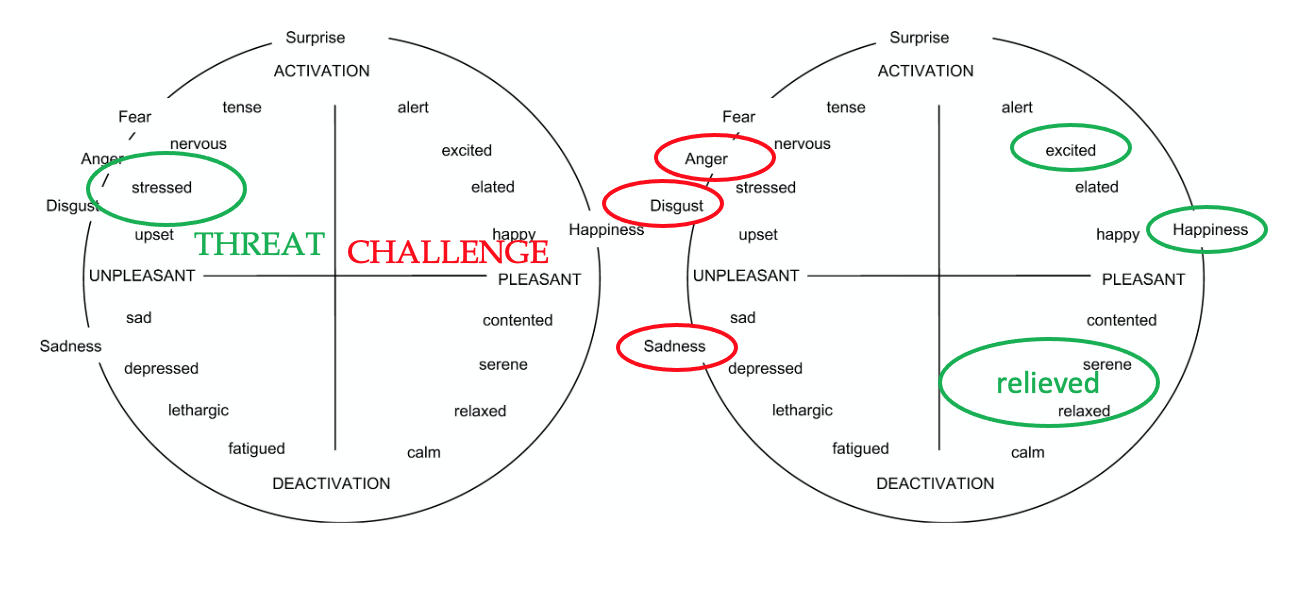Chapter 8: Fear, Anxiety, and Stress
Dimensional View of Stress
Figure 25
Russel’s (1980) model on right and Watson and Tellegen’s (1985) model on the left

Note. Threat emotions in color green and challenge emotions in color red. Left image adapted from “Independence and bipolarity in the structure of current affect,” by L. Feldman Barrett and J.A. Russell, 1998, Journal of Personality and Social Psychology, 74(4), p. 970 (Independence and bipolarity in the structure of current affect.). Copyright 1998 by the American Psychological Association. Right image adapted from “Toward a consensual structure of mood.,” by D.T. Watson and A. Tellegen, 1985, Psychological Bulletin, 98(2), p. 221 (Toward a consensual structure of mood.). Copyright 1985 by the American Psychological Association.

